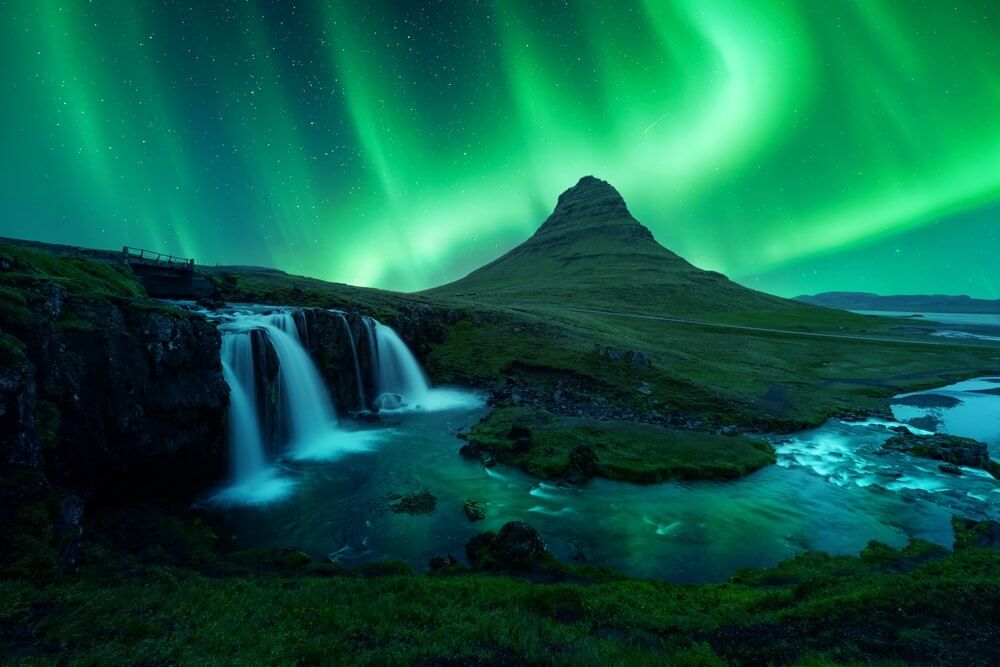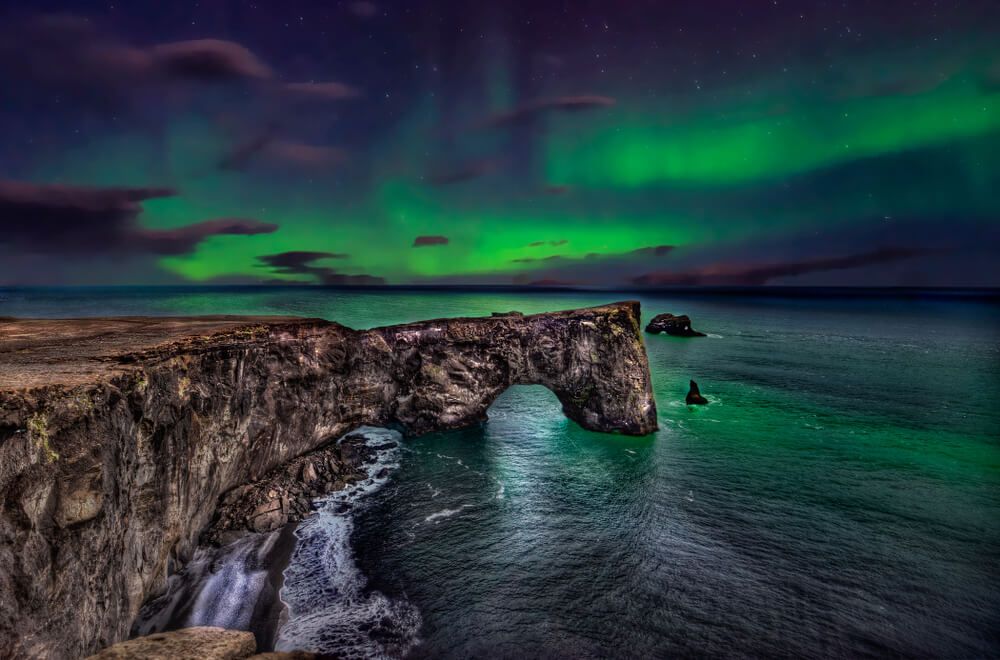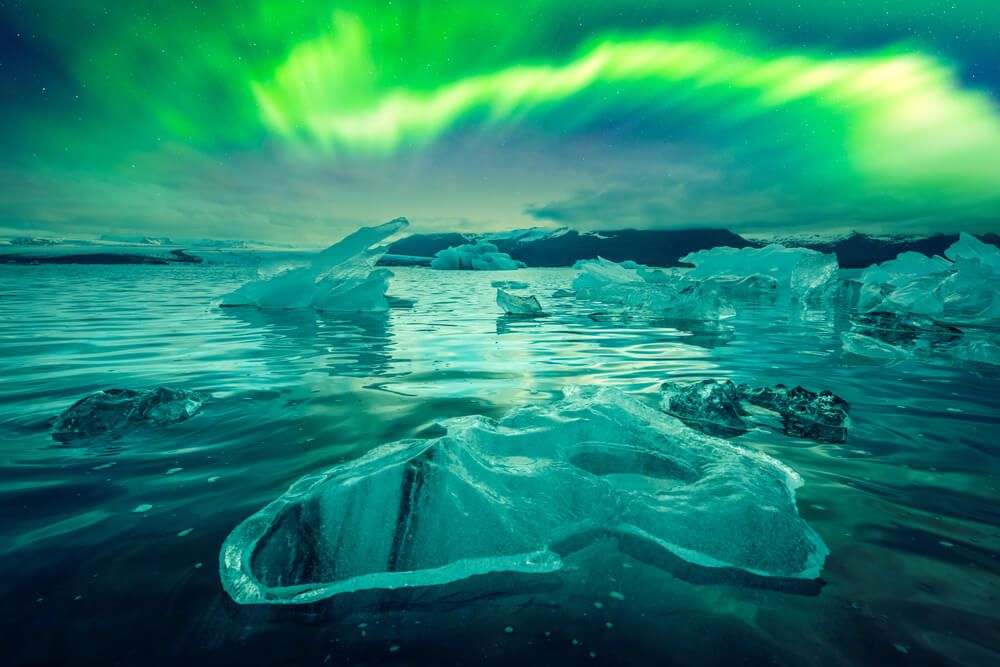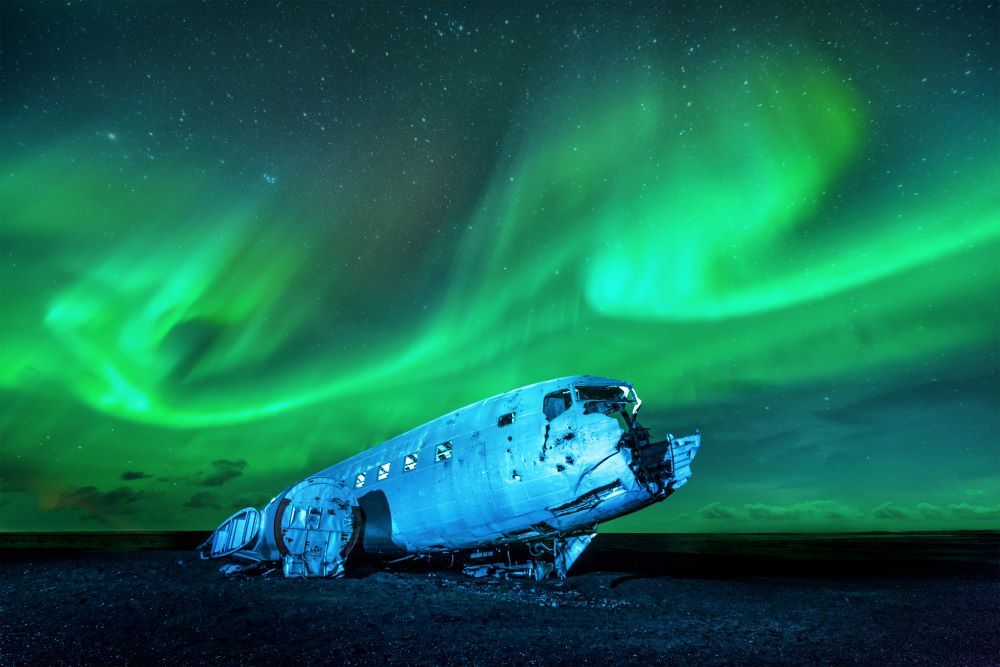14 November 2024
Best Northern Lights self-drive tour in Iceland

The Northern Lights are Iceland’s most beautiful natural wonder. Seeing this magical spectrum dancing in the night sky should be on every traveler’s bucket list. Iceland is full of amazing scenery, from breathtaking waterfalls to active volcanoes and geysers. But the Northern Lights surpass them all with their mysterious beauty.
That’s why I’m going to show you the best way to catch them. Follow me as we take a self-drive tour, hunting for the Northern Lights in Iceland!
Best Time to See the Northern Lights
The Northern Lights, also known as the Aurora Borealis, can be seen in Iceland from late September to April. By this time, Iceland’s famous midnight sun has set, and darkness returns to the country’s night sky.
The best time to see them can vary since aurora activity depends on solar winds. However, October and March are often the most active months, marking the start and end of the Northern Lights season.
To see the Northern Lights, you’ll also need a clear sky. Winter weather in Iceland is unpredictable, but November and February often provide good visibility for stargazing. That said, the darkest months—December and January—may offer the best opportunity to catch the auroras. The long, cold nights during these months increase your chances, as the limited daylight gives you more hours of darkness to work with.

Most Efficient Northern Lights Tour
Whatever you do, don’t book a pre-scheduled Northern Lights tour. Since it’s impossible to predict exactly where and when the Northern Lights will appear, it’s important to stay mobile. Renting a car in Iceland gives you the freedom to travel at your own pace, choosing where and when to go as you chase the auroras.
The darker your surroundings, the more visible the Northern Lights become. That means you’ll need to get far away from cities and light pollution for the best experience. Be careful though, driving in Iceland’s winter conditions after dark can be tricky, so take precautions and drive safely.
Here are some key points when doing a self guided Northern light tour in Iceland.
- Have flexible itineraries based on real-time aurora forecasts.
- Check road and weather conditions.
- Bring winter clothes and dress appropriately.

Top Places to See the Auroras
While you can’t guarantee time or location for spotting the Northern Lights, there are several places in Iceland you should prioritize for your aurora-hunting trip. Here are a few recommendations:
Kirkjufell Mountain
Kirkjufell Mountain, along with the nearby Kirkjufellsfoss waterfall, is located on the Snæfellsnes Peninsula in West Iceland. Known for its striking, standalone shape, Kirkjufell is Iceland’s most photographed mountain. Capturing a photo of the auroras above this iconic peak is sure to be unforgettable.
Dyrhólaey
Dyrhólaey is a small peninsula on the south coast shaped like a natural stone arch. The best view is from the top of a hill, where an old lighthouse overlooks the cliffs. From here, you’ll enjoy a panoramic vista of Dyrhólaey, the Reynisfjara black sand beach, and the Atlantic Ocean. Add the Northern Lights to this breathtaking scenery, and you’ll have something truly special.

Jökulsárlón Glacier Lagoon
Jökulsárlón, a glacier lagoon in East Iceland, is part of the Vatnajökull National Park. Here, massive icebergs break off from the glacier and float serenely in the lagoon. Watching the Northern Lights reflect off the icy waters as they dance across the sky in brilliant colors is a surreal, once-in-a-lifetime experience.
Sólheimasandur
Sólheimasandur is a black sand beach on Iceland’s southern coast, most famous for the wreckage of a DC military airplane. Far from any light pollution, the site is a fantastic spot to fully experience the Northern Lights in all their glory. While the beach is just off the Ring Road, it’s still a hidden gem that’s popular among professional photographers.
These locations are remote yet easily accessible, making them perfect for aurora hunters. Of course, visibility and aurora activity will vary, so flexibility is key. Other great spots to consider include Stuðlagil Canyon in East Iceland and the country’s countless waterfalls, which provide stunning backdrops for aurora photography.
Conclusion
Iceland has no shortage of natural wonders, but the Northern Lights are the crowning jewel of the country’s many attractions. There’s no way to describe the feeling of seeing the auroras in person—it’s something you have to experience for yourself.
All you need is a rental car, a clear sky, and an adventurous spirit, and Iceland will reward you with memories that last a lifetime. So pack your warm layers, keep an eye on the forecast, and let Iceland’s magical night sky light up your journey